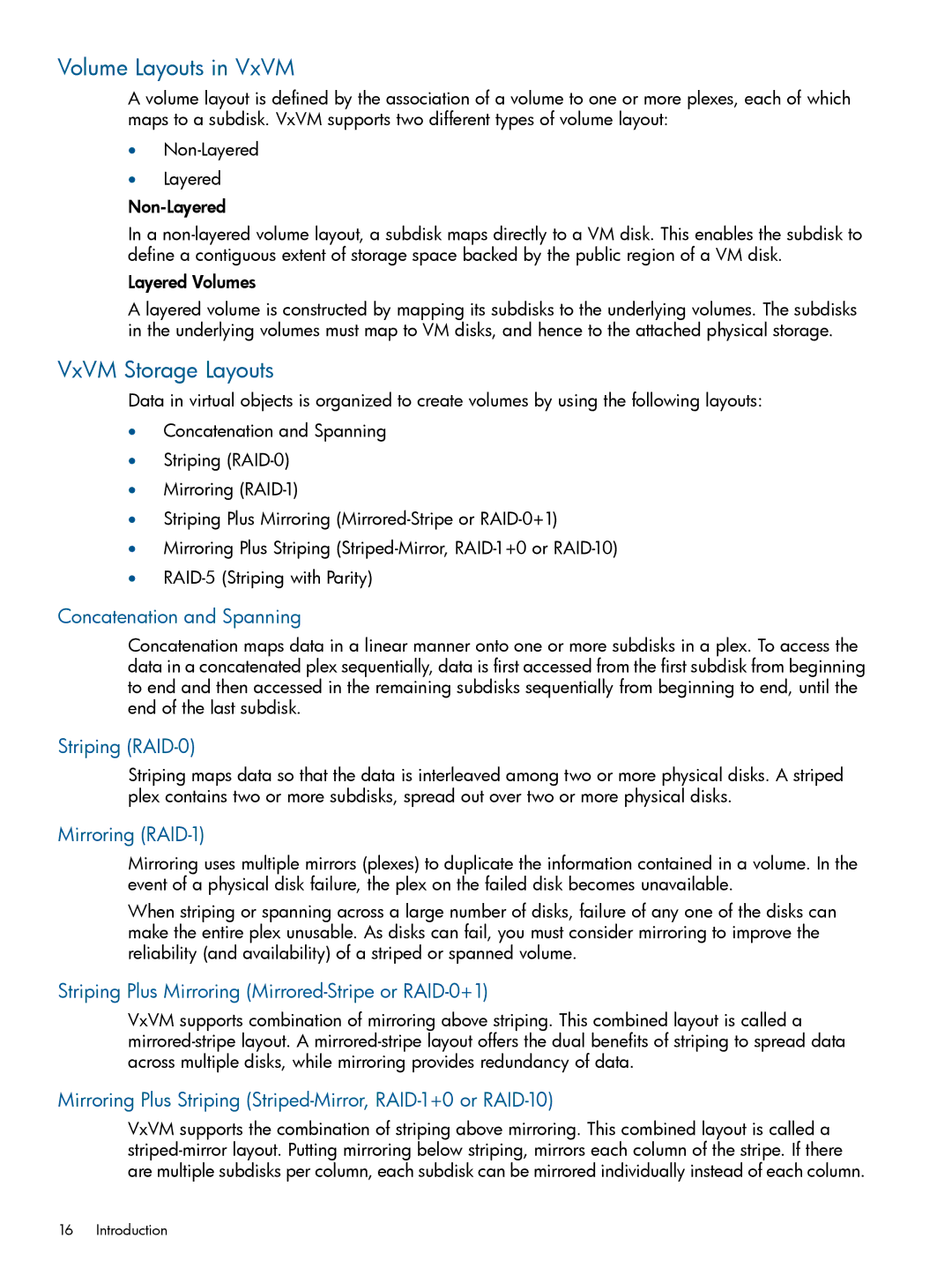Volume Layouts in VxVM
A volume layout is defined by the association of a volume to one or more plexes, each of which maps to a subdisk. VxVM supports two different types of volume layout:
•
•Layered
In a
Layered Volumes
A layered volume is constructed by mapping its subdisks to the underlying volumes. The subdisks in the underlying volumes must map to VM disks, and hence to the attached physical storage.
VxVM Storage Layouts
Data in virtual objects is organized to create volumes by using the following layouts:
•Concatenation and Spanning
•Striping
•Mirroring
•Striping Plus Mirroring
•Mirroring Plus Striping
•
Concatenation and Spanning
Concatenation maps data in a linear manner onto one or more subdisks in a plex. To access the data in a concatenated plex sequentially, data is first accessed from the first subdisk from beginning to end and then accessed in the remaining subdisks sequentially from beginning to end, until the end of the last subdisk.
Striping (RAID-0)
Striping maps data so that the data is interleaved among two or more physical disks. A striped plex contains two or more subdisks, spread out over two or more physical disks.
Mirroring (RAID-1)
Mirroring uses multiple mirrors (plexes) to duplicate the information contained in a volume. In the event of a physical disk failure, the plex on the failed disk becomes unavailable.
When striping or spanning across a large number of disks, failure of any one of the disks can make the entire plex unusable. As disks can fail, you must consider mirroring to improve the reliability (and availability) of a striped or spanned volume.
Striping Plus Mirroring (Mirrored-Stripe or RAID-0+1)
VxVM supports combination of mirroring above striping. This combined layout is called a
Mirroring Plus Striping (Striped-Mirror, RAID-1+0 or RAID-10)
VxVM supports the combination of striping above mirroring. This combined layout is called a
